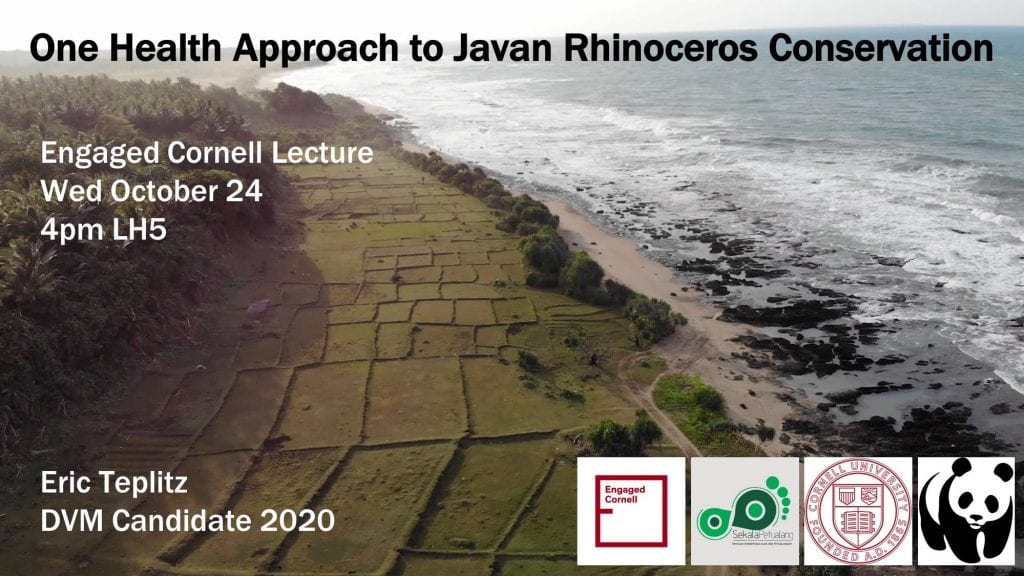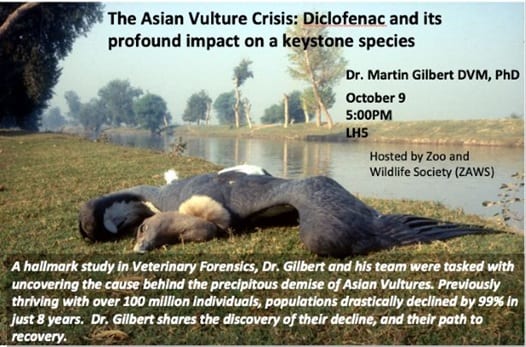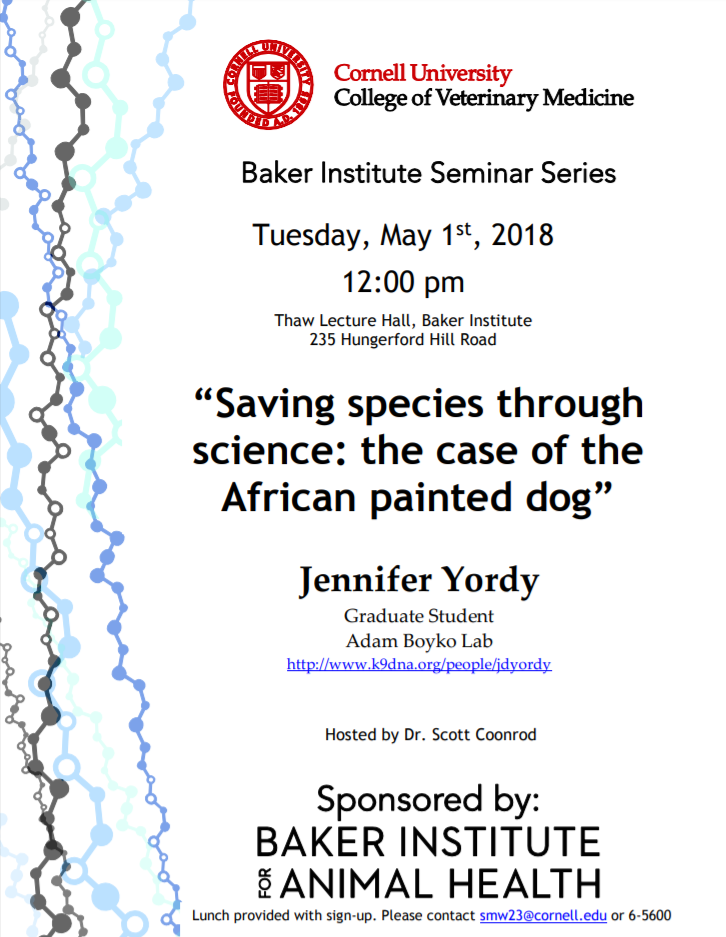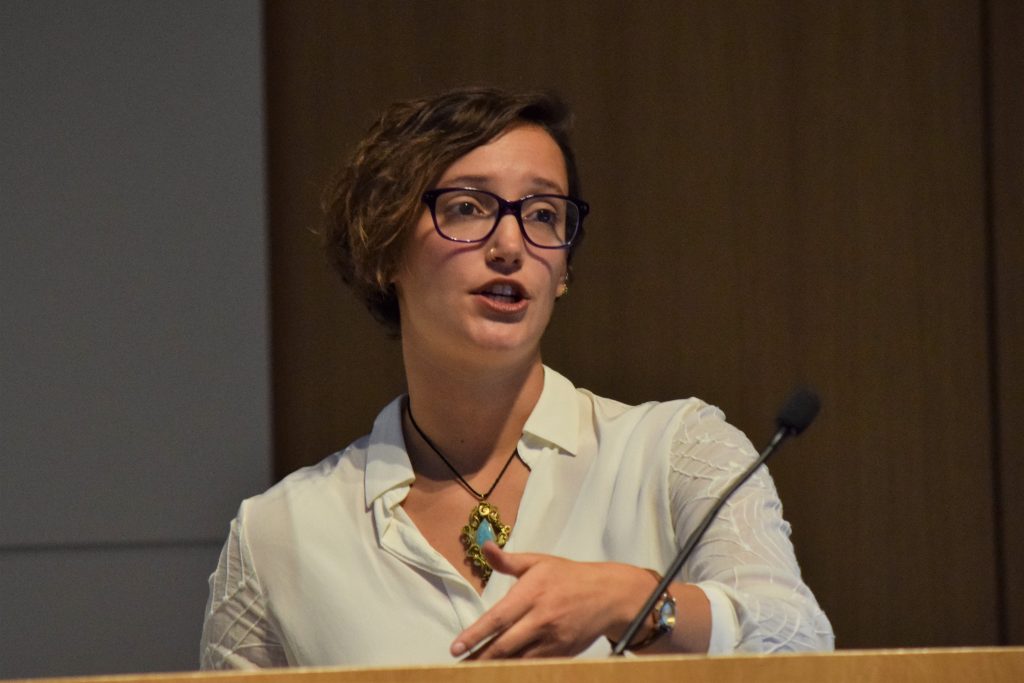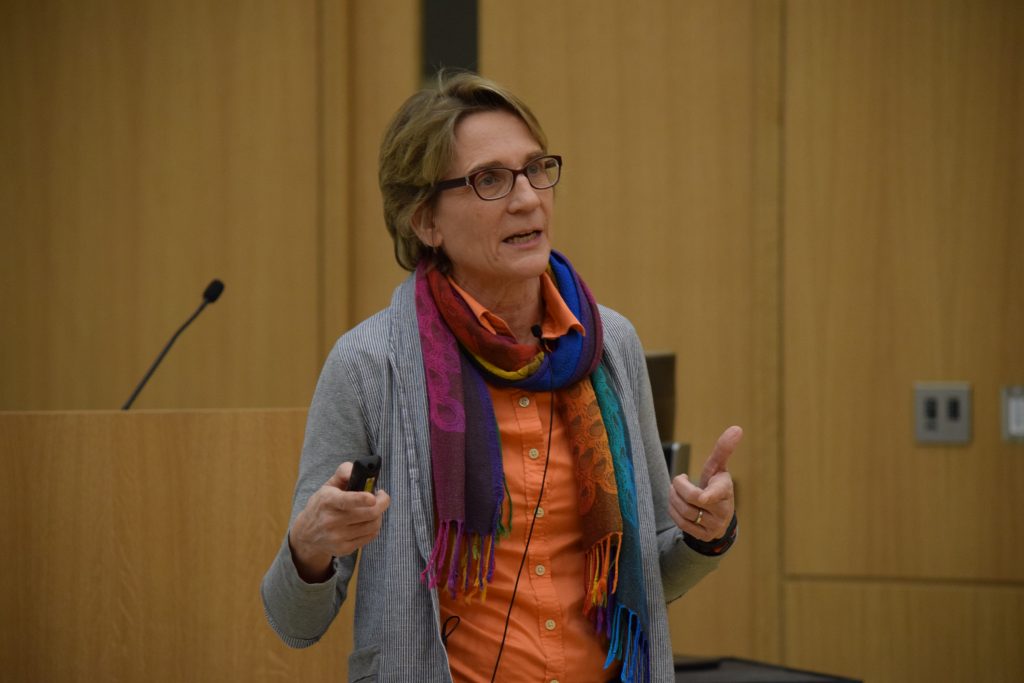Tag Archives: conservation
Dinner Lecture – The Asian Vulture Crisis: Diclofenac and its profound impact on a keystone species
Dinner Event: Careers in Wildlife Conservation, Zoo, and Exotic Medicine
Lunch Lecture: “Saving species through science: the case of the african Painted dog”
Dinner lecture: “Let’s drink to conservation – how coffee can help people and the planet”
What: Tropical Biology and Conservation will host Dr. Amanda Rodewald, the Director of Conservation Science at the Cornell Lab of Ornithology and Garvin Professor in Natural Resources who has worked extensively with bird and biodiversity conservation in Latin American agroecosystems.
Pizza and beverages provided from 5:00-5:15 PM, the talk begins at 5:15 PM and a discussion follows.
When: April 11, 5pm
Where: Emerson Hall, room 135
Event: “Every Picture Tells a Story: How to Create Visual Stories in the Field”
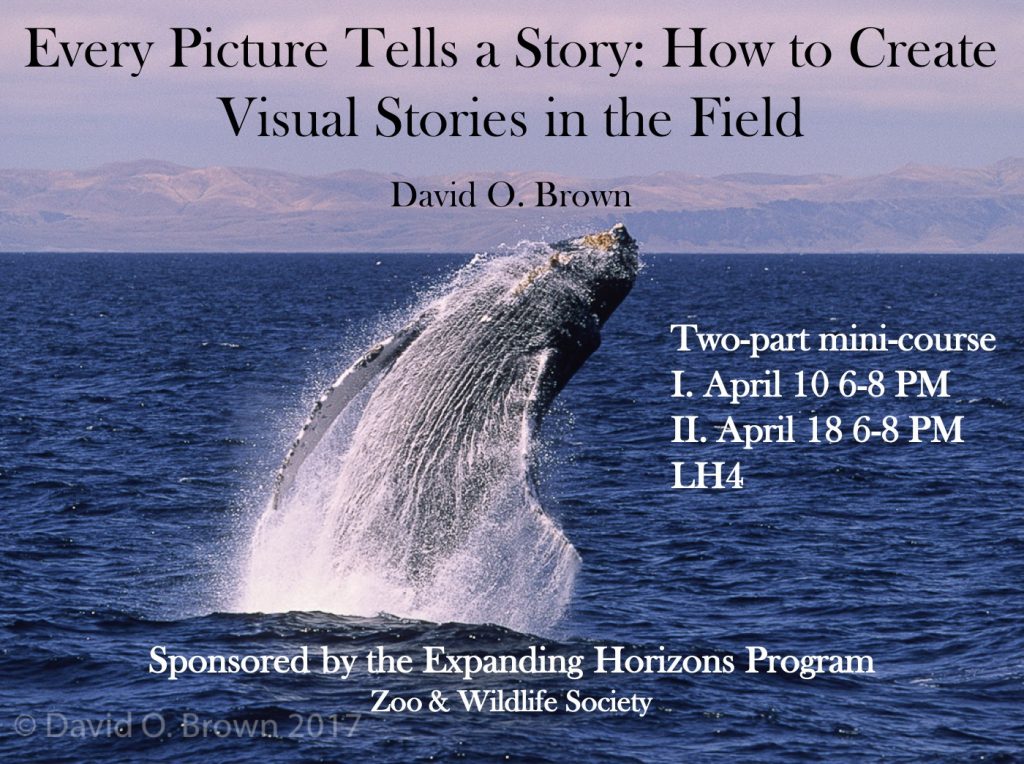 What: ZAWS be hosting David Brown, an award-winning cinematographer, to teach a course in wildlife photography/cinematography and visual storytelling, including its importance in wildlife conservation. The course will be taught in two 2-hour sessions. To get the most out of the course you should attend both lectures, but if you can only attend one that is okay.
What: ZAWS be hosting David Brown, an award-winning cinematographer, to teach a course in wildlife photography/cinematography and visual storytelling, including its importance in wildlife conservation. The course will be taught in two 2-hour sessions. To get the most out of the course you should attend both lectures, but if you can only attend one that is okay.
When: April 10th and April 18th, 6-8pm
Where: Lecture Hall Floor, the vet school
Dinner will be served. Sign up here
Lunch Lecture: Linking migratory bird conservation with agroforestry and coffee cultivation in Latin America
What: Ruth Bennett will be presenting a seminar entitled “Linking migratory bird conservation with agroforestry and coffee cultivation in Latin America.” This is co-sponsored by IP-CALS and Tropical Biology and Conservation.
When: Wednesday, March 28, 12:20-1:20 pm
Where: Emerson Hall 135
Dinner Lecture: Conservation with communities
What: 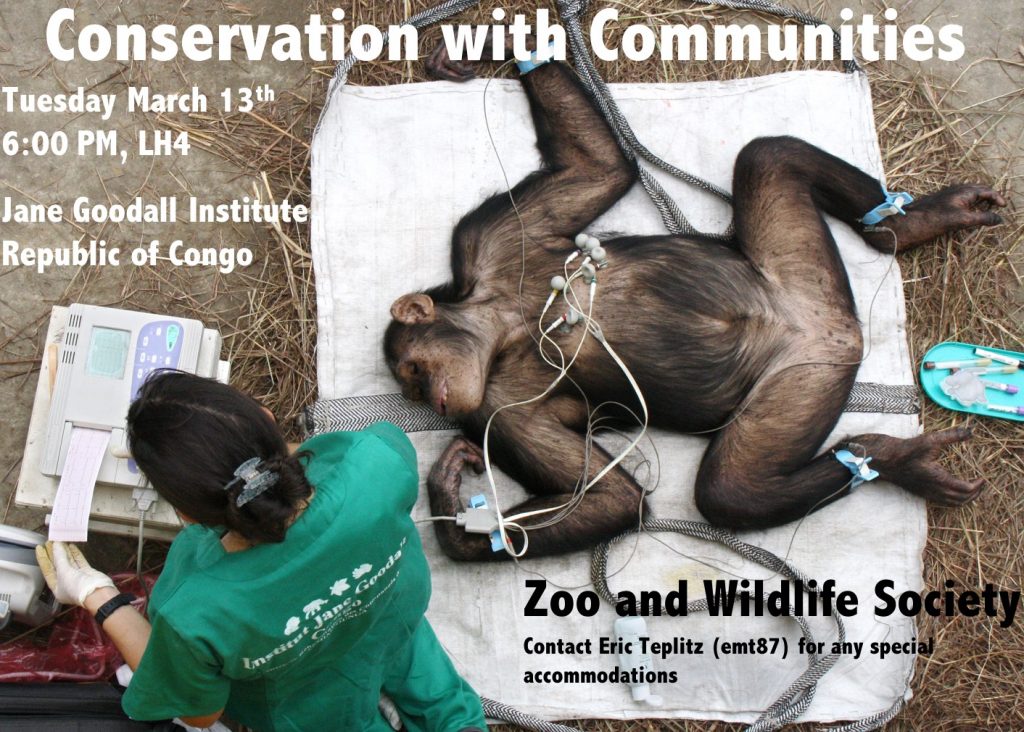 Join ZAWS for a lecture from the Jane Goodall Institute (JGI) veterinary team as part of the JGI Republic of Congo Program! Dr. Rebeca Atencia and Sofia Fernandez will discuss JGI initiatives in Congo as well as their experiences in conservation and global veterinary medicine. Bring your own plates and utensils.
Join ZAWS for a lecture from the Jane Goodall Institute (JGI) veterinary team as part of the JGI Republic of Congo Program! Dr. Rebeca Atencia and Sofia Fernandez will discuss JGI initiatives in Congo as well as their experiences in conservation and global veterinary medicine. Bring your own plates and utensils.
When: Tuesday March 13th, 6:00 PM
Where: Lecture Hall 4, the vet school
Six speakers discuss different aspects of conservation medicine at the first annual Wildlife Health Day
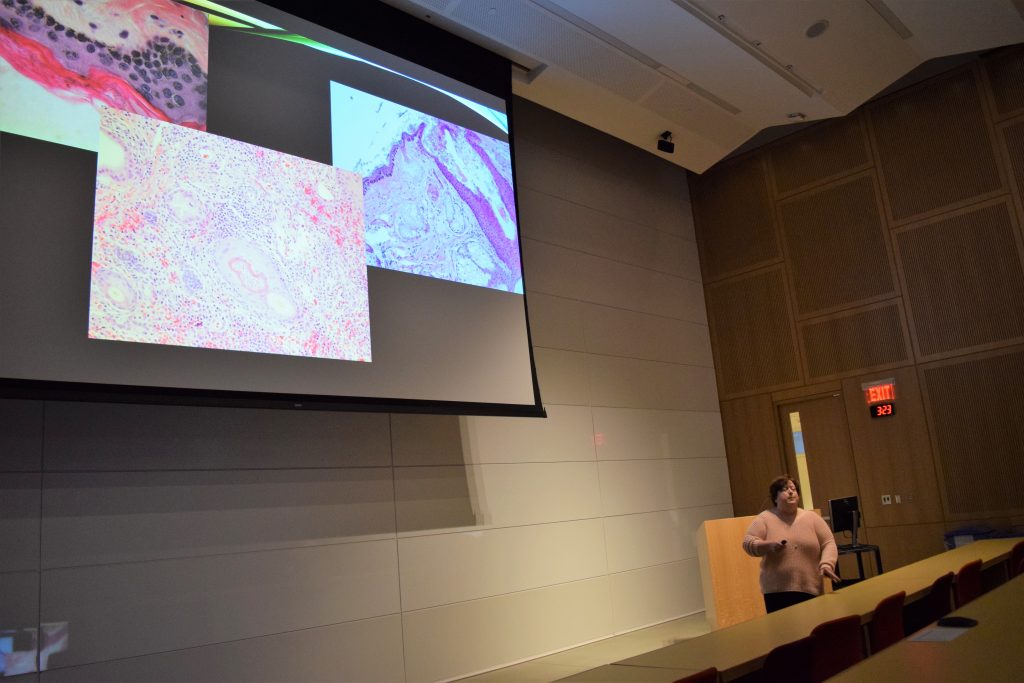
Dr. Elizabeth Buckles discussing the histopathology of white-nose syndrome, a fungal disease affecting North American bats.
On Saturday, six speakers shared their experiences in conservation, wildlife, and One Health. The topics were wide-ranging, covering conservation of endangered species, zoo animal nutrition, plastic waste, and honeybee health. For every topic, the speakers highlighted the importance of wildlife health and the role of the veterinarian.
Zack Dvornicky-Raymond (’19), kicked off Wildlife Health Day with a talk that drew from both his personal experience and his knowledge of the conservation field. Zack first described his Expanding Horizons experience in Namibia where he used his veterinary skills to help the Cheetah Conservation Fund with their guard dog breeding program. He then discussed Assisted Reproductive Technologies (ARTs) and their use in breeding endangered species, drawing from his experience studying canine reproduction at the Travis Lab. Zack also drew from his experience at the Smithsonian, where he investigated better ways to transport sperm for the endangered Przewalski’s horse, information critical for preserving the genetic diversity of the species. Zack then discussed the role of contraception-based wildlife management, before finishing off with a reflection about the impact of human population growth on the state of the natural environment.
Dr. Sara Childs-Sanford discussed the unique challenges of managing nutrition in captive wildlife. Many of the nutritional problems that zoo animals face stem from our lack of knowledge of the specific nutritional requirements for these understudied species. Dr. Childs-Sanford did leave the audience with some solutions, citing successful attempts in nutrition research: improving the reproductive success of maned wolves and helping pangolins survive in captivity.
Drawing on her research and coursework, Mariah Beck (’20) shifted the focus to environmental health with her talk on our use and waste of plastic, and its effect on ocean life. She cited three main ways that plastic waste harms marine animals: entanglement, ingestion, and toxicity. Not only do plastics harm iconic species like whales and turtles, but their toxicity also harms animals like mussels which provide important ecosystem services. Mariah called on veterinarians to advocate for reducing the amount of plastic waste in the ocean and pitched ideas to help achieve this goal.
Dr. Elizabeth Buckles dove into a case study on white-nose syndrome in bats, drawing from her own experience as a veterinary pathologist who helped identify the cause of the outbreak. This inspired several principles for working with understudied species including “know your species,” “reach out to experts,” and “be creative.” Dr. Buckles finished with several wildlife pathology anecdotes, including one about how the CDC ignored warnings from veterinarians about the arrival of West Nile Virus to the United States. These examples illustrated the need for veterinarians to speak up to protect both human and wildlife health.
The conversation moved to honeybee health when Dr. Robin Radcliffe gave a lecture on colony collapse and the light that wild honeybee colonies can shed on it. Curiously, wild honeybee populations have not suffered from all of the problems that face captive bee colonies. For instance, as Dr. Radcliffe explained, wild honeybees have developed behavioral immunity to the Varroa mite which has devastated captive bee populations. His main message was that there is a need for greater monitoring of colony health by the veterinary community, something the Cornell College of Veterinary Medicine is facilitating by adding a new distribution course on apiary medicine.
Dr. Sharon Deem, wildlife veterinarian for the St. Louis Zoo, finished off the day as the keynote speaker. She rehashed many of the issues brought up by other speakers, while also sharing her perspective on the most important issues in wildlife health. Dr. Deem emphasized One Health, drawing on her research on diseases of camels being used as livestock in Kenya. She left the audience with advice for future wildlife veterinarians.
Wildlife Health day drew dozens of vet students and faculty, giving members of the Cornell Veterinary community a chance to learn about the opportunities and challenges within the field. These types of events aim to increase levels of awareness and emphasize the importance of veterinarians in conservation and One Health.
Dinner Lecture: Conseration of Przewalski’s Horses in the Great Gobi B
 Dr. Christian Walzer, executive director of the Wildlife Conservation Society and head of Conservation Medicine at the University of Veterinary Medicine Vienna, Austria will present a 50min talk to the Cornell Graduate Community on his work with Przewalski Horse Conservation in the Great Gobi B Strictly Protected Area, a nature preserve in South-Western Mongolia.
Dr. Christian Walzer, executive director of the Wildlife Conservation Society and head of Conservation Medicine at the University of Veterinary Medicine Vienna, Austria will present a 50min talk to the Cornell Graduate Community on his work with Przewalski Horse Conservation in the Great Gobi B Strictly Protected Area, a nature preserve in South-Western Mongolia.
Also joining Dr. Walzer will by Dr. PK Robbins Walzer, a clinical veterinarian with over 25 years experience in a wide variety of zoological collections, including zoos in Los Angeles, San Diego and Disney’s Animal Kingdom.
Dr. Walzer’s talk will be followed by a Q & A with both Dr. Walzer and Dr. Robbins Walzer to discuss general aspects of careers in conservation and zoo medicine.
When: Thursday, February 15 at 5:30 PM
Where: LH4, the vet school
RSVP here or through the email sent out on the ZAWS listserv
About Przewalski’s horses:
The Przewalski’s horse, called “Takhi” in Mongolian, is an endangered species of wild equid native to the steppes of central Asia. It became extinct in the wild and has only survived due to captive breeding. The Przewalski’s horse has now been reintroduced to its native range and is the target of numerous conservation efforts. Unlike the American mustang, which is descended from feral domestic horses, the Przewalski’s horse is a unique species of equid which has never been domesticated. It remains the only true wild horse in the world today.

